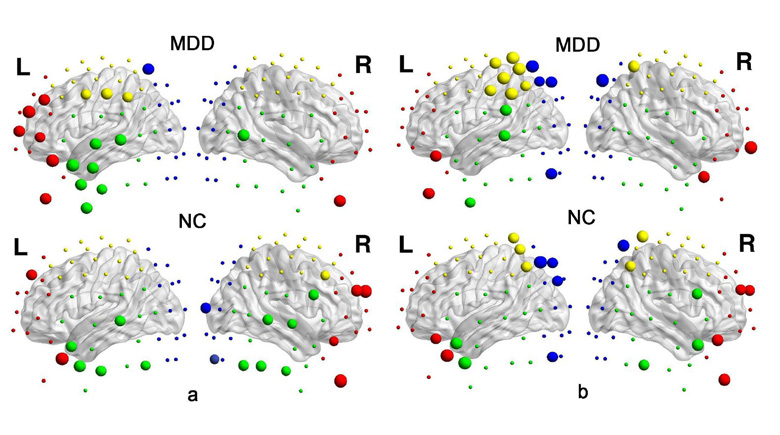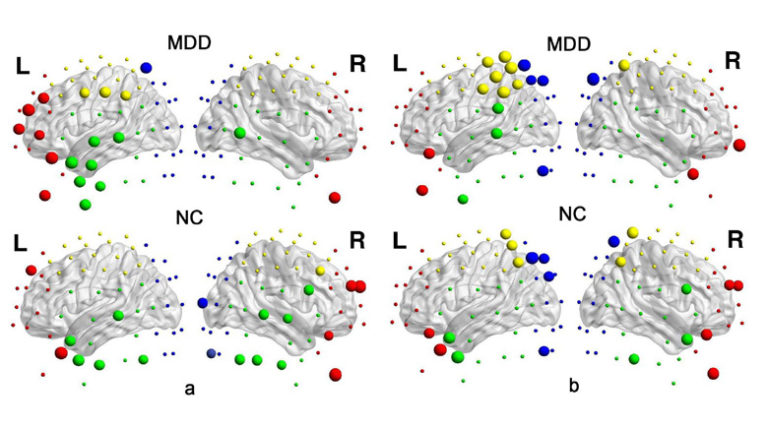
Existing studies have shown functional brain networks in patients with major depressive disorder (MDD) have abnormal network topology structure. But the methods to construct brain network still exist some issues to be solved. This study is to explore reliable and robust construction methods of functional brain network using different coupling methods and binarization approaches, based on high-density 128-channel resting state EEG recordings from 16 MDD patients and 16 normal controls (NC). It was found that the combination of imaginary part of coherence (ICoh) and Cluster-Span Threshold (CST) outperformed other methods. Based on this combination, right hemisphere function deficiency, symmetry breaking and randomized network structure were found in MDD, which confirmed that MDD had aberrant cognitive processing. Furthermore, clustering coefficient (CC) in left central region in theta band and node betweenness centrality (NBC) in right temporal region in alpha band were significantly negatively correlated with depressive level. And these network metrics had the ability to discriminate MDD from NC, which indicated that these network metrics might be served as the electrophysiological characteristics for probable MDD identification. Hence, our study may provide reliable methods to construct functional brain network and offer potential biomarkers in MDD.

